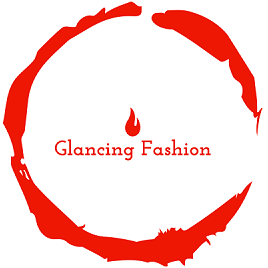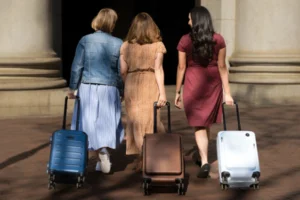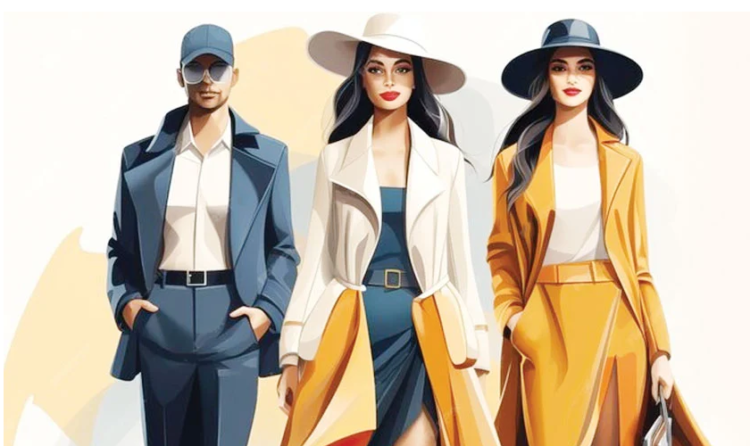The Evolution of Fashion
Fashion is a dynamic and multifaceted industry that reflects cultural shifts, technological advancements, and artistic expression. Its evolution is a story of continuous change, driven by historical events, social movements, and the relentless quest for individuality. This article delves into the fascinating journey of fashion, examining its history, influences, and future.
Historical Milestones
Early Beginnings
Fashion, in its most rudimentary form, began with the necessity of clothing for protection and modesty. Early humans used natural materials like animal skins and plant fibers to create garments that served practical purposes. As civilizations progressed, so did their approach to clothing, which began to reflect social status, cultural identity, and artistic expression.
The Renaissance to 19th Century
The Renaissance era marked a significant shift in fashion, with an emphasis on elaborate designs and luxurious fabrics. This period saw the rise of haute couture in European courts, where fashion became a symbol of wealth and power. The 19th century brought the Industrial Revolution, which transformed fashion with the advent of mass production and ready-to-wear clothing, making fashion more accessible to the general public.
Influences on Fashion
Cultural Influences
Fashion is deeply intertwined with cultural identity. Traditional garments often carry historical and symbolic meanings, reflecting the values and aesthetics of different societies. For instance, the kimono in Japan and the sari in India are more than just clothing; they represent cultural heritage and national pride.
Social and Political Movements
Fashion has always been a mirror of societal changes. The 1920s flapper dresses symbolized women’s liberation and changing roles in society, while the 1960s countercultural movements brought about a revolution in youth fashion, embracing bold patterns and unconventional styles. Fashion often acts as a form of protest or statement, reflecting broader social and political dynamics.
Technological Advancements
Technology has significantly impacted fashion, from the invention of synthetic fibers to the rise of digital fashion shows. Innovations like 3D printing and smart textiles are pushing the boundaries of what fashion can be, allowing designers to experiment with new materials and techniques.
Key Fashion Icons
Historical Figures
Throughout history, certain individuals have become synonymous with fashion. Figures like Coco Chanel, whose designs revolutionized women’s fashion, and Christian Dior, known for his New Look, have left an indelible mark on the industry. These icons not only influenced trends but also shaped the future of fashion design.
Contemporary Influencers
In today’s world, fashion influencers and celebrities play a crucial role in shaping trends. Social media platforms like Instagram and TikTok have given rise to a new generation of fashion icons who set trends and influence consumer behavior in real-time. Designers and fashion houses collaborate with these influencers to reach broader audiences and create buzz around their collections.
Sustainability and Future Trends
The Push for Sustainability
As environmental concerns become more pressing, the fashion industry is undergoing a significant transformation towards sustainability. Brands are increasingly adopting eco-friendly practices, such as using recycled materials, reducing waste, and supporting ethical labor practices. The rise of “slow fashion” emphasizes quality over quantity, encouraging consumers to make more mindful purchasing decisions.
Digital Fashion
The future of fashion is being shaped by digital innovations. Virtual fashion shows and digital wardrobes are becoming more prevalent, allowing designers to reach global audiences without the constraints of traditional fashion weeks. Augmented reality (AR) and virtual reality (VR) technologies are also enhancing the shopping experience, providing customers with immersive ways to explore and try on garments.
Conclusion
Fashion is a vibrant and ever-evolving field that reflects the complexities of human expression and societal changes. From its humble beginnings to its current state of rapid innovation, fashion continues to be a powerful form of art and communication. As we look to the future, the industry’s focus on sustainability and digital advancements will likely shape the next era of fashion, continuing to inspire and challenge our perceptions of style and self-expression.
FAQs on Fashion
1. What are the key factors that influence fashion trends?
Fashion trends are influenced by a variety of factors, including:
- Cultural Shifts: Social changes, such as movements for equality or new artistic movements, often shape fashion. For example, the 1960s countercultural movement led to bold, unconventional styles.
- Celebrity and Influencer Impact: Celebrities and social media influencers play a significant role in setting trends. Their personal styles often become fashion statements that fans and followers replicate.
- Historical Events: Major events, such as wars or economic shifts, can influence fashion. For instance, the austerity of World War II led to more practical, streamlined clothing styles.
- Technological Advances: Innovations in textile production and design technologies, such as 3D printing and smart fabrics, can create new fashion possibilities and trends.
- Seasonal Changes: Seasonal weather conditions and seasonal color palettes often dictate fashion trends, influencing collections that are suited for different times of the year.
2. How can I develop my own personal style?
Developing a personal style involves several steps:
- Understand Your Preferences: Explore different fashion styles and identify what resonates with you. Consider aspects like color, silhouette, and fabric that you feel comfortable in.
- Experiment: Try out different looks and trends to see what suits you best. Don’t be afraid to step out of your comfort zone and mix various elements to find your unique style.
- Invest in Key Pieces: Build your wardrobe with versatile, high-quality pieces that reflect your personal style. These key items will serve as the foundation for creating various outfits.
- Follow Fashion Influences: Observe how style icons or influencers with similar tastes put together their outfits. Use these observations as inspiration to refine your own style.
- Embrace Confidence: The most important aspect of personal style is confidence. Wear what makes you feel good and aligns with your personality, and you’ll naturally develop a style that’s authentically yours.








